Pyramid Challenge Puzzle
This blog post contains Amazon affiliate links. As an Amazon Associate, I earn a small commission from qualifying purchases.
Today I want to share with you the Pyramid Challenge Puzzle.
Last week, we tackled the color square puzzle from Puzzle Box, Volume 1. This book is my current top recommendation for teachers who are looking to incorporate more puzzles into their classroom.
Or, maybe you want a challenge yourself. What I love about this book is that the puzzles are accessible but still challenging. Many puzzle books start with too difficult of a level of puzzles, and it can be easily frustrating.
These puzzles seem doable but often turn out to be trickier than you first expected.
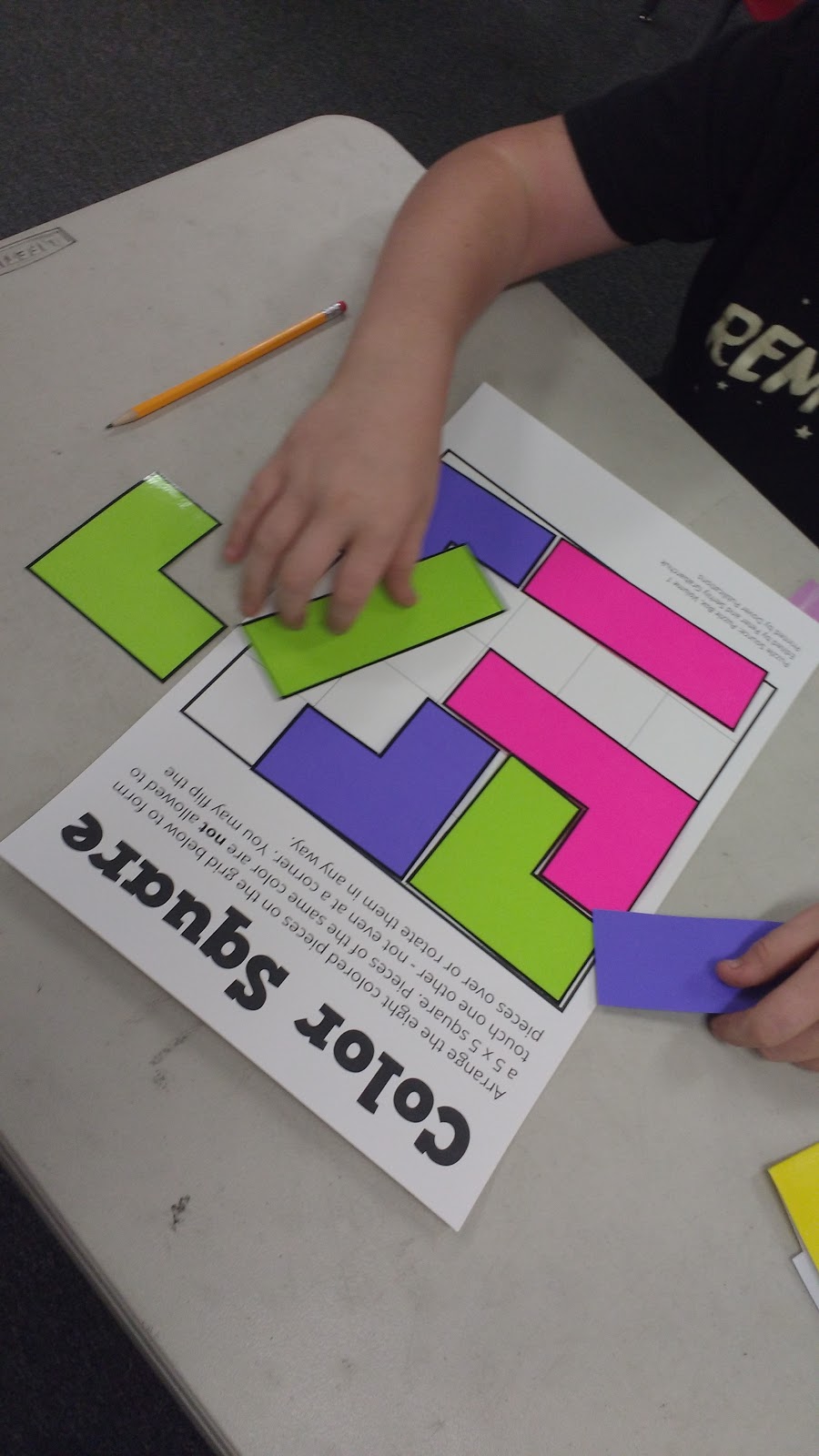
My students tackled this puzzle all week long between classes and after finishing their work. As students worked at the puzzle, their struggle brought other students to the puzzle table to see what all the fuss was about.
This engaged even more students. A handful of students succeeded in solving the puzzle. My students were engaged ALL week long for the most part.
Some students would make comments about how I was “torturing” them with these puzzles they couldn’t figure out. But, those same students would be back at the puzzle table day after day trying to tackle the puzzle.
Due to last week’s success, I decided to tackle the pyramid challenge puzzle from Puzzle Box, Volume 3 . This is Puzzle 170 in the book, and it was authored by Peter Grabarchuk.
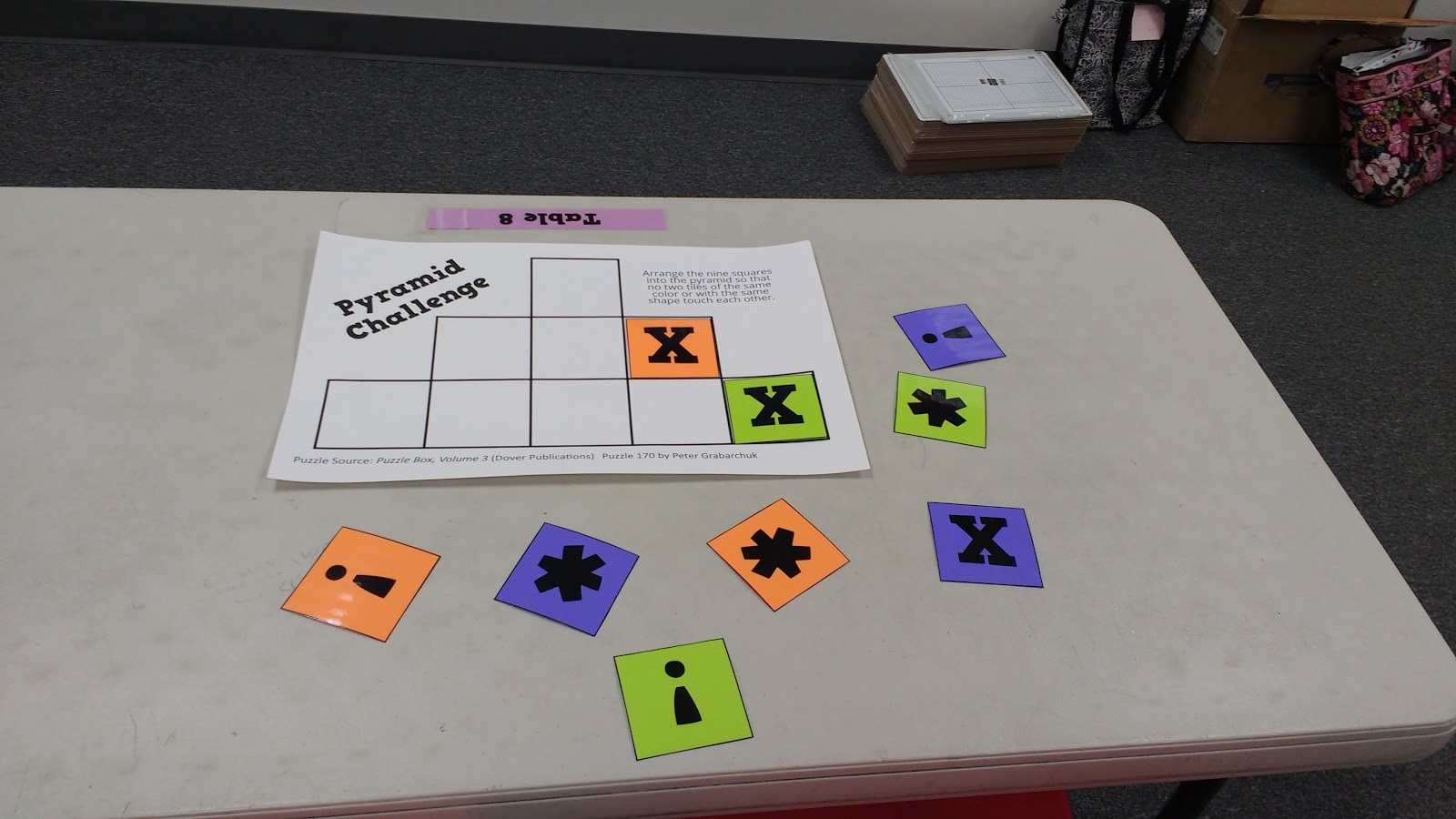
You are given a pyramid shaped board and nine squares. There are three squares of three different colors. Additionally, there are three different symbols possible for each square.
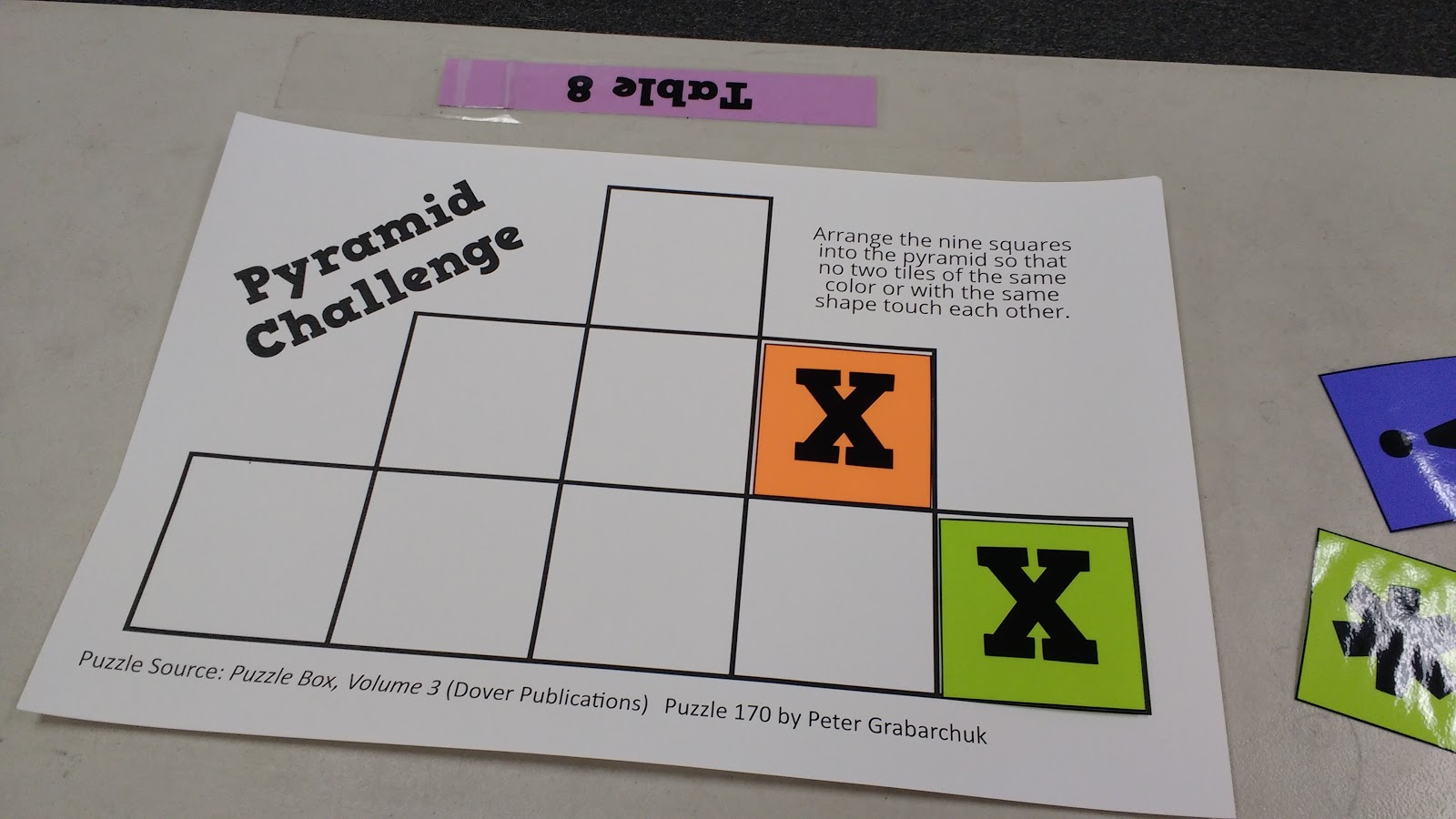
The task is to arrange the nine squares into the pyramid so that no two squares with the same color or same shape touch each other ALONG AN EDGE.
Last week’s puzzle didn’t allow pieces to touch at a corner. In this puzzle, pieces CAN touch at a corner. They just can’t touch at an edge. So, the X pieces in the picture above are in an allowed arrangement.
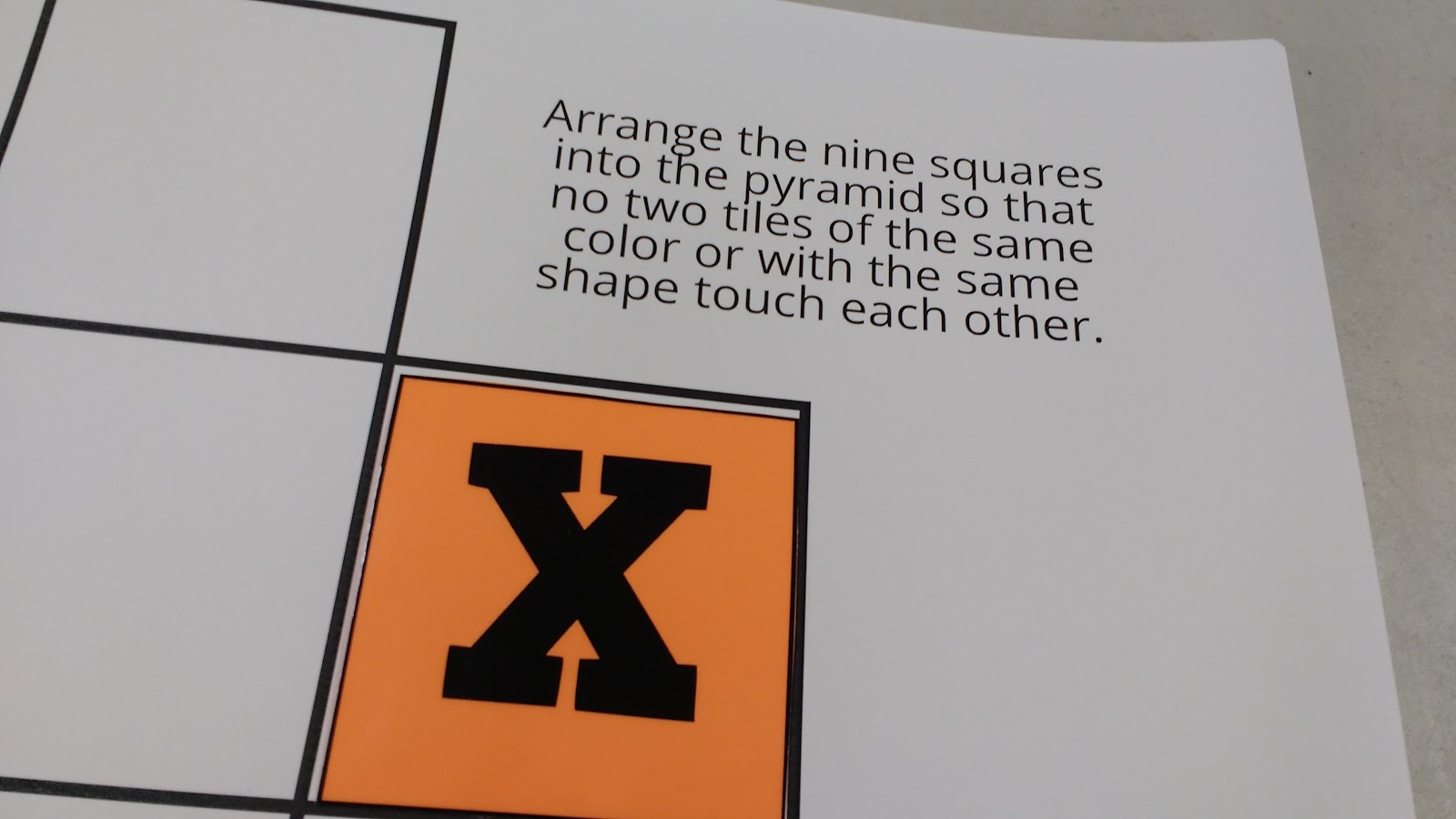
The game board is designed to print on 11 x 17 cardstock.
The game pieces for the pyramid challenge puzzle are designed to print on three different colors of letter sized paper. You will need to print the same page three separate times on three separate colors.
If you don’t have access to 11 x 17 cardstock, you can scale the print job to fit on letter sized paper. Remember what scale value you used so you can scale the game pieces by the same percent.
Otherwise, the game pieces will be too large for your downsized pyramid challenge game board!
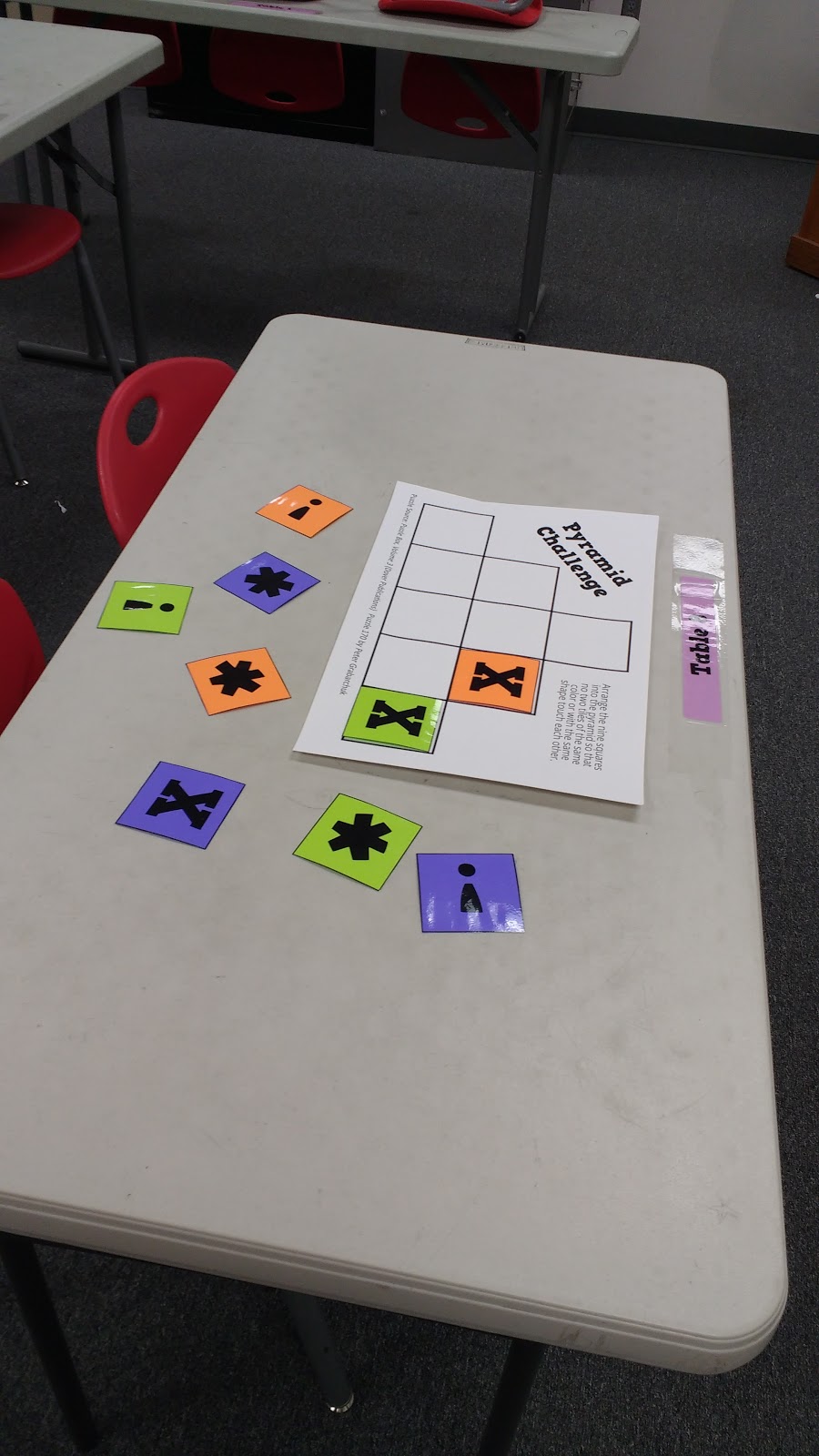
Digital Version of Pyramid Challenge
Crystal Finch recreated the Pyramid Challenge Puzzle in Google Slides.
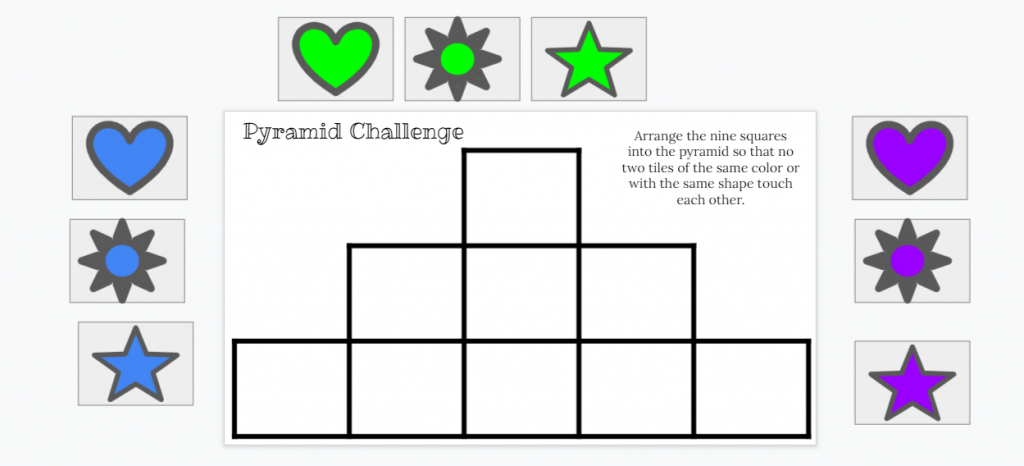
Pyramid Challenge Puzzle Files
Puzzle Solutions
Puzzle solutions are available on a password-protected solution page. I do not openly post the puzzle answer keys because one of my goals as a resource creator is to craft learning experiences for students that are non-google-able. I want teachers to be able to use these puzzles in their classrooms without the solutions being found easily on the Internet.
Please email me at sarah@mathequalslove.net for the password to the answer key database featuring all of my printable puzzles and math worksheets. I frequently have students emailing me for the answer key, so please specify in your email what school you teach at and what subjects you teach. If you do not provide these details, I will not be able to send you the password.
Not a teacher? Go ahead and send me an email as well. Just let me know what you are using the puzzles for. I am continually in awe of how many people are using these puzzles with scouting groups, with senior adults battling dementia, or as fun activities in their workplace. Just give me enough details so I know you are not a student looking for answers to the puzzle that was assigned as their homework!
Other Thoughts on Puzzles
When the new pyramid challenge puzzle was set out on Monday, many of the same students who had tackled the color square puzzle last week, tried their hand at this puzzle. Something different happened, however.
On Tuesday, students started solving it. Then, they didn’t want any more to do with it. More students didn’t get sucked in. Instead, it just sat there, basically untouched, for the last part of the week.
Last week, they vented their frustration about how hard the puzzle was. This week, they vented their frustration about how they would be bored for the rest of the week since they had already solved the puzzle.
Here are my thoughts. As you can see, I have many more questions than answers.
Both are great puzzles. I solved both and enjoyed solving both.
Students enjoyed solving both.
Frustration is not a bad thing. Students would rather be frustrated than bored. Though, I’m not sure a student would admit that…
I don’t think the problem is with the puzzles but with my puzzle table. When a student finishes one puzzle, they need another puzzle to tackle immediately to prevent boredom.
But, how do I pull this off? At the moment, I have a limited number of puzzles ready for my puzzle table. I can’t put them all out. Should I place multiple puzzles out at the same time?
Should I just accept the fact that some week’s puzzles will engage students for longer than others?
What implications does this have for how I run my math class?

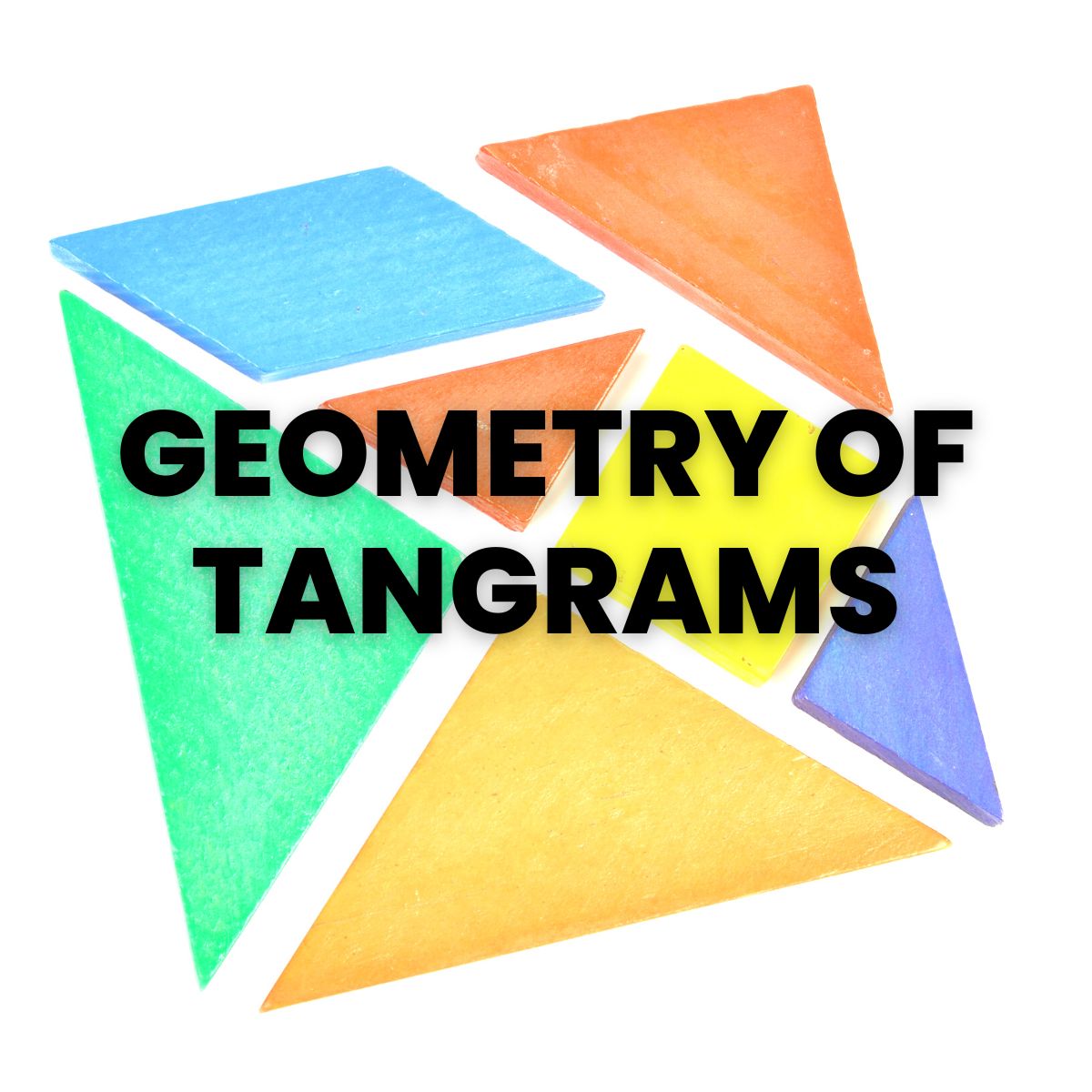
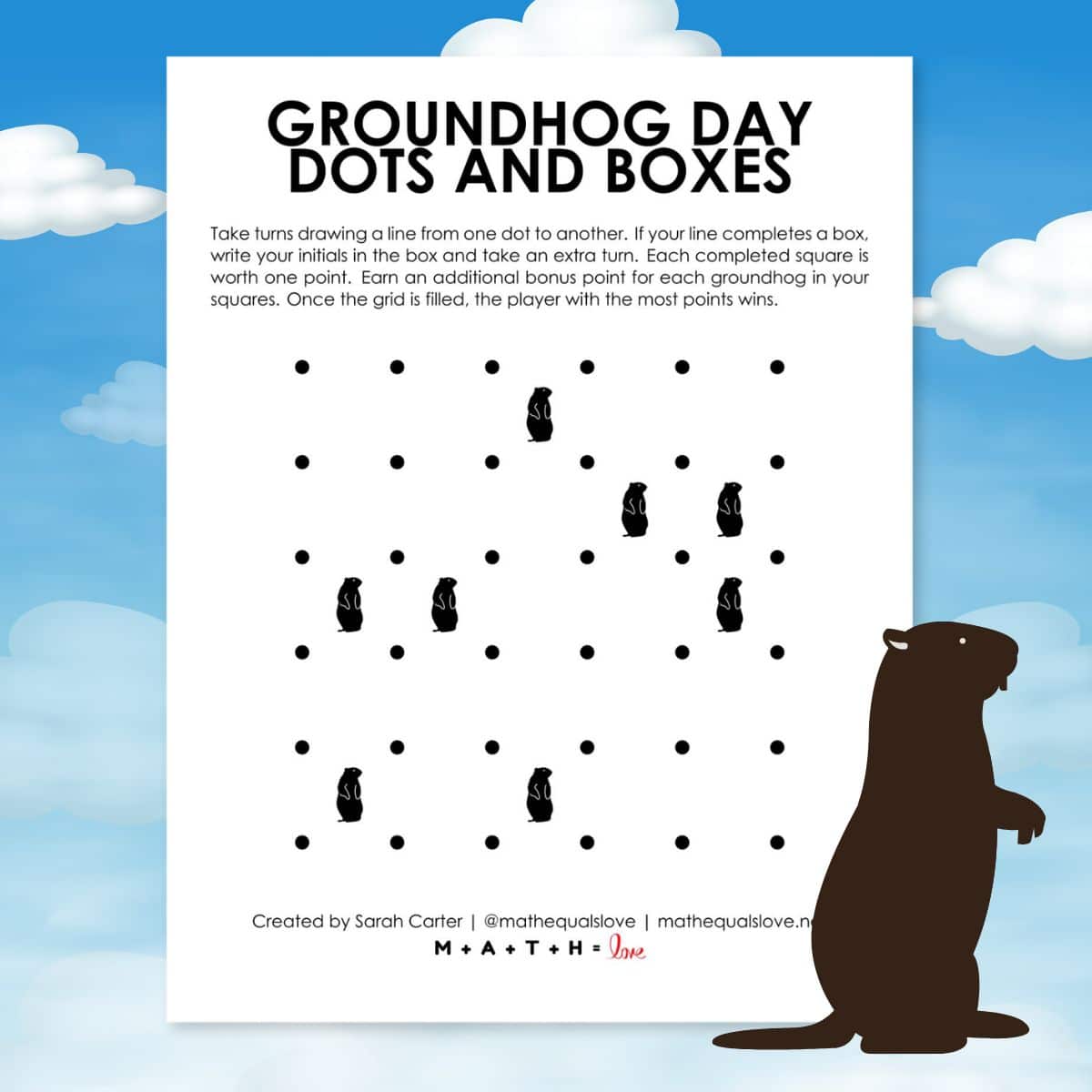
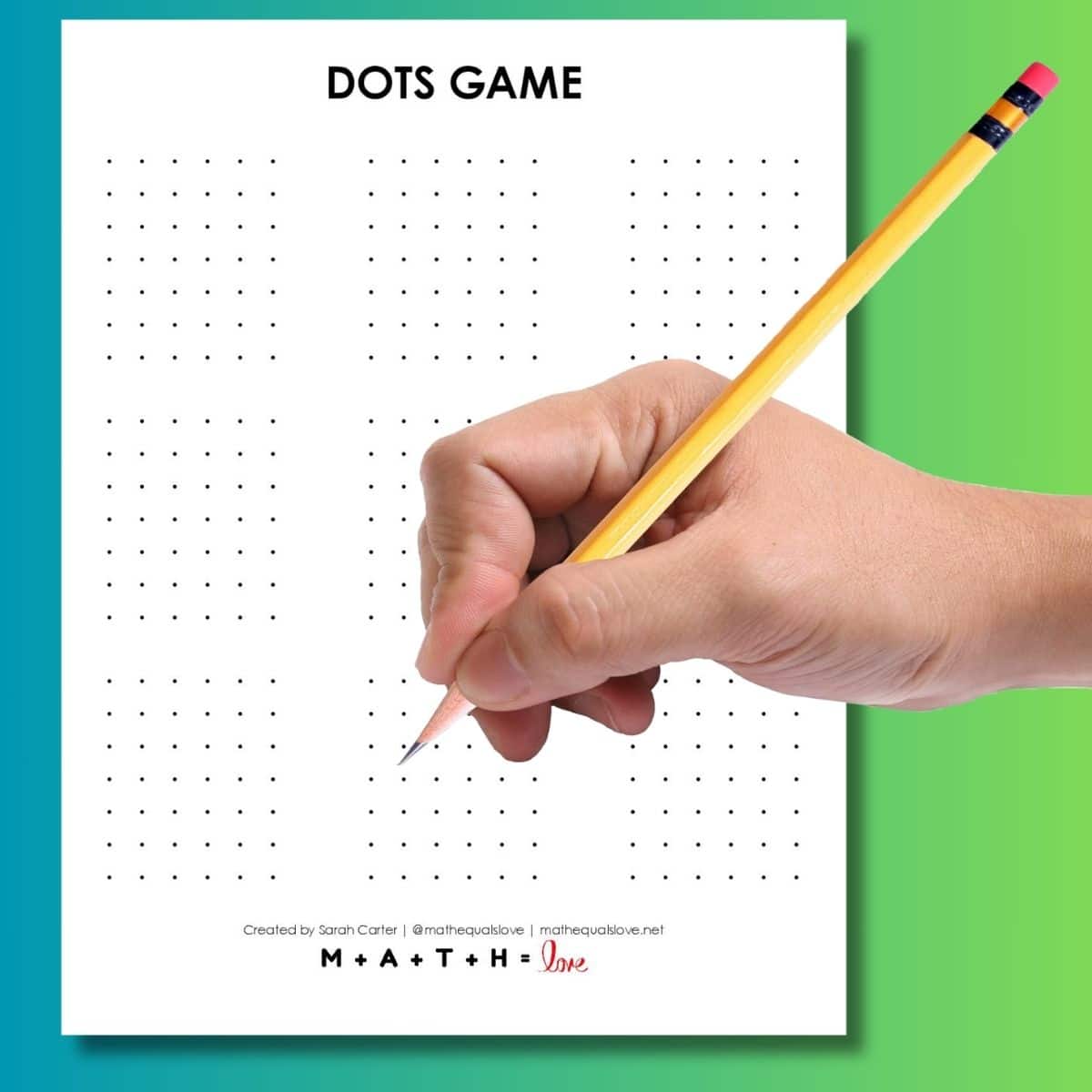
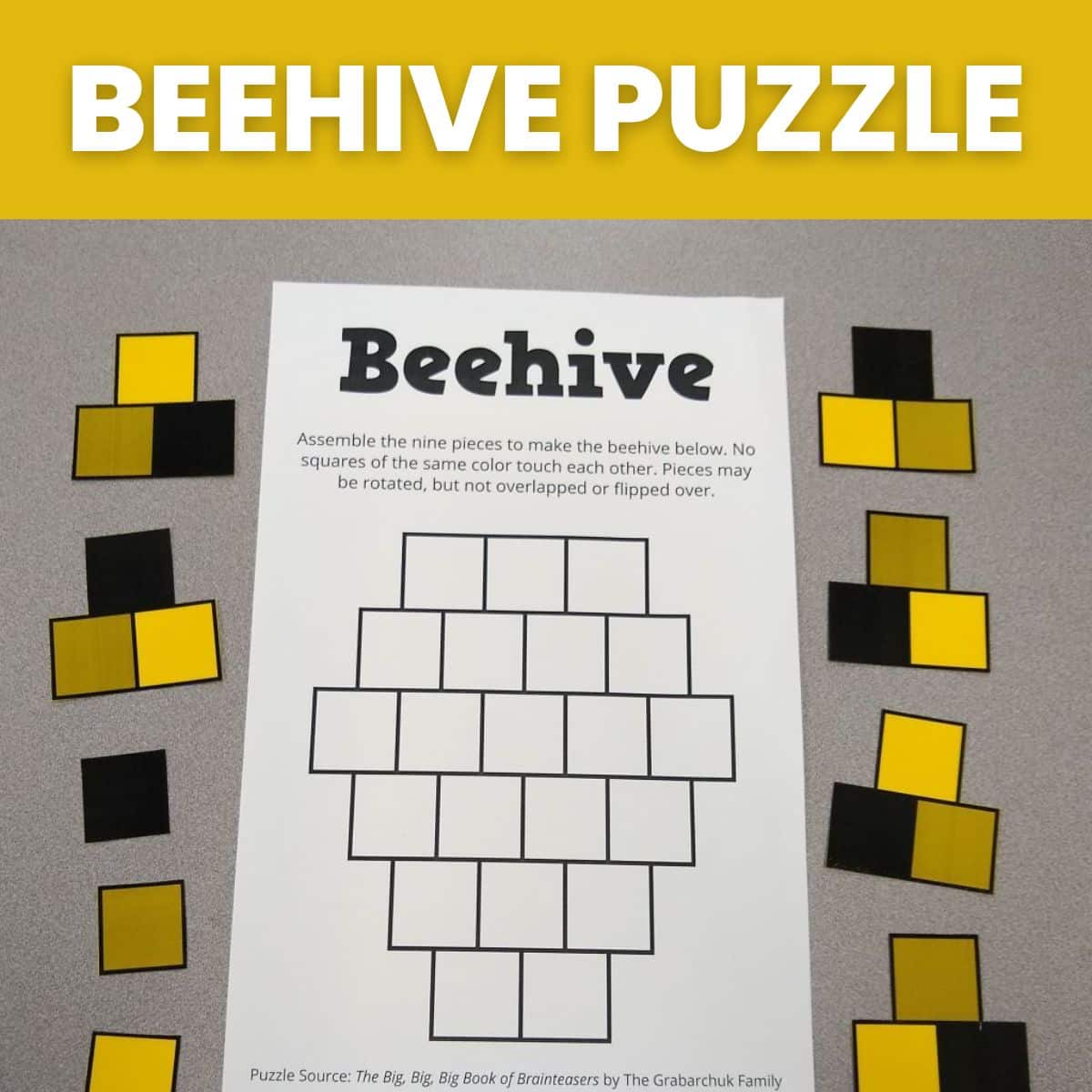
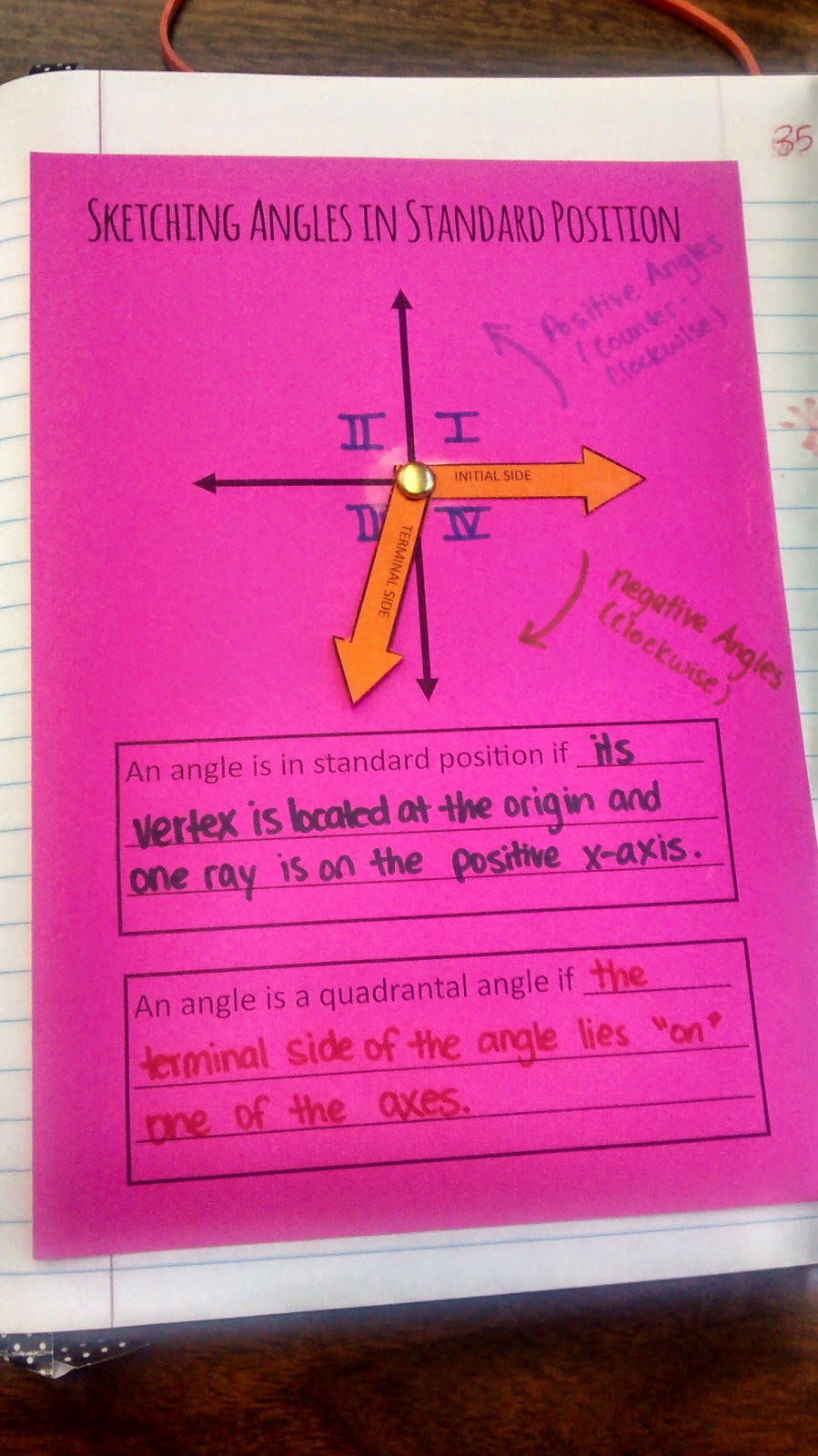
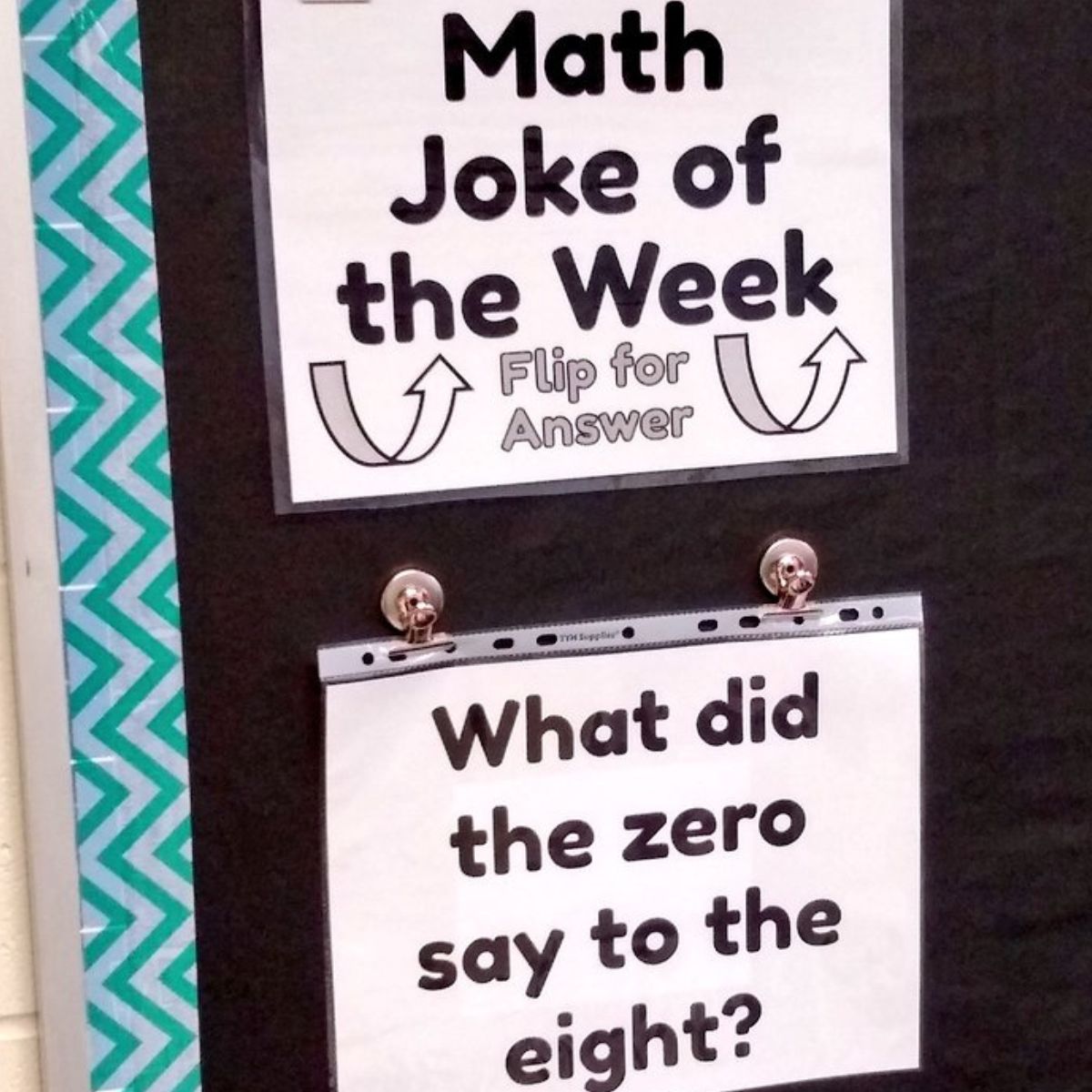
I love the idea of a puzzle table! I teach third grade, is the Puzzle Box book too difficult? Trying to figure out where to start.
I like the idea of one week-long puzzle at a time, but when they are done with it, maybe there's a website or an app they can use to try a few other types of puzzles. My kids love the MathDoku+ app which is basically Kenken. They also like Math Rings, Pick-a-Path, and http://www.mathplayground.com
But, if the reason you have it out is to keep them ocupied, then maybe you want to put out two per week.
That's occupied… duh.
And, sorry you weren't feeling well- it's so hard to be sick during the school year!
When the kids finish puzzles early, I challenge them to create their own. They can either make one in an entirely new category or one similar to the one they just solved. If it works, I make copies to put out.